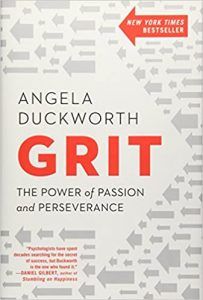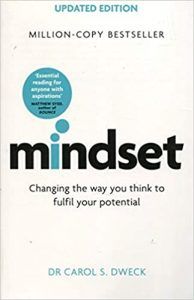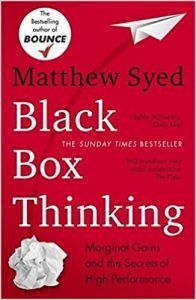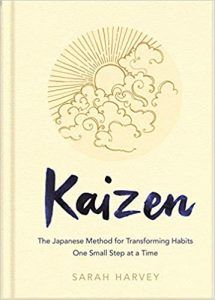Perseverance in Psychology: Meaning, Importance & Books
 Perseverance refers to our ability to pursue a goal or passion over time, and stick with it if we encounter obstacles or setbacks.
Perseverance refers to our ability to pursue a goal or passion over time, and stick with it if we encounter obstacles or setbacks.
In the Values in Action Inventory of Strengths, perseverance is defined as “finishing what one starts; persevering in a course of action despite obstacles; ‘getting it out the door’; taking pleasure in completing tasks.”
It is closely related to a range of other concepts including resilience, motivation, drive, determination, grit, passion, and conscientiousness.
Various studies have shown that perseverance is an essential quality for success in life (Duckworth, 2016). It often tops aptitude and raw talent and is a more accurate predictor of achievement.
Our ability to stick with our tasks, goals, and passions is vital. Persevering entails effort and practice. It also involves our ability to learn from failure and try again when thrown off our horses until we get thrown off no more (Dweck, 2017).
Before you continue, we thought you might like to download our three Strengths Exercises for free. These detailed, science-based exercises will help you or your clients realize your unique potential and create a life that feels energized and authentic.
This Article Contains:
What Is Perseverance in Psychology?
We can understand perseverance as a continuous drive to reach our goals and improve our skills and performance through persistent effort. It is a form of purposefulness and goal-orientation, which requires long-term commitment and discipline. It is fueled by passion.
While perseverance is distinct from motivation and determination, it includes elements of both. As Angela Duckworth’s research has shown, success at something requires persistence through some form of discomfort, an ability to push through when confronted with complications (Duckworth, Kirby, Tsykayama, Berstein, & Ericsson, 2010).
In that sense, perseverance is related to our ability to delay gratification, self-regulate, and practice self-control. All of these are required to honor our commitment to a longer term goal. Perseverance means that we prioritize sustainable future rewards over short-term pleasures in the present.
Crucially, all forms of learning and mastery require perseverance (Duckworth et al., 2010; Ericsson, 2006). If we did not persist with our efforts to speak; walk; master a bike, new language, or instrument; or overcome anxieties or beliefs that hold us back, we would all remain stuck.
It would halt our cognitive, physical, and psycho-social development. There would be no progress. Persistence – another facet of perseverance – can also be understood as a personality or temperamental trait (Cloninger, Svrakic, & Przybeck, 1993). As such, it is related to effort, ambition, and perfectionism.
In the Big Five or Five-Factor Model, core aspects of perseverance map onto features of conscientiousness. Researchers such as Markus Credé argue that the notion of grit is not so different from conscientiousness, which includes goal-setting, self-discipline, orderliness, and care (Credé, Tynan, & Harms, 2017).
Perseverance as a Character Strength

Passion here is understood as a strong consistency of interest that provides the underlying motivation for reaching long-term goals.
In her bestselling book Grit: The Power of Passion and Perseverance (2016), Duckworth has shown that grit is an essential quality for success in life. Although our natural talent matters, perseverance is much more critical than pure ability as a predictor of our achievement. However, most of us falsely believe that inborn talent is the core driver of success.
“Our potential is one thing. What we do with it is quite another,” Duckworth writes (2016, p. 17). While aptitude, skills, and a basic degree of talent are important as determiners of success, they are not as significant as hard work and trying, again and again, to improve what we do.
Duckworth has conducted numerous studies that show that people with grit are much more likely to succeed than individuals who lack it (Duckworth, Peterson, Matthews, & Kelly, 2007). These results are most evident in academic contexts, where grittier students achieve better grades, higher educational attainment levels, and greater success in competition (Duckworth & Quinn, 2009).
We can consider the combination of passion and perseverance that Duckworth describes as grit as a dispositional tendency. We might even wish to consider it a character strength. But crucially, Duckworth believes that grit can be learned. In other words, we can all practice becoming grittier and work on our ability to persevere.
Perseverance – more than inspirational words – Skillsoft
5 Real-Life Examples of Perseverance
Let’s look at how perseverance can be found in practical applications.
1. J. K. Rowling
J. K. Rowling, author of the hugely successful Harry Potter series, wrote her first manuscript under great hardship. A single mother, she lived in dire poverty and depended on welfare. She used every spare minute she had for writing.
When completed, her novel was rejected by numerous agents. But she did not give up. Eventually, she found one who took her on. Soon after, her agent found a publisher, and her books became global bestsellers that have been adapted into various blockbuster movies. She is now one of the richest women in the world.
2. Thomas Edison
Another true paragon of perseverance is Thomas Edison. The inventor of the electric lightbulb, he revolutionized modern life. Edison tried relentlessly to realize his vision of the lightbulb. He failed hundreds, perhaps thousands, of times before he had his breakthrough moment.
He was reported to have said while still experimenting:
I have not failed; I’ve just found 10,000 ways to make a lightbulb that won’t work.
Crucially, then, he considered the negative results just as valuable as any positive results. Understanding what does not work, and why, was simply part of the process of eventually finding out what does. He also believed that “Genius is one percent inspiration, ninety-nine percent perspiration.”
3. Walt Disney
Walt Disney’s success, too, did not come easily. As a young man, he was fired from the local newspaper, where he worked as a cartoonist. His boss believed he lacked creativity.
An early animation company of his failed, leaving him in dire financial difficulties. At one moment in his life, when he was unable to pay his bills, he was even reported to have eaten dog food to survive.
Despondent and with nothing to lose, Walt Disney traveled to Hollywood. There, too, things were not easy. He faced a barrage of rejection, was told he would never make it, and that Mickey Mouse – his passion project – was destined to fail. Well, it did not.
4. Henry Ford
Another great icon, Henry Ford, is known as the inventor of the assembly line, and it is he who revolutionized industrial production. Henry Ford had gone bankrupt numerous times before he turned the Ford Motor Company into a success.
5. Sir Richard Branson
Sir Richard Branson, who has dyslexia, struggled in school. He failed many of his exams and was considered a problem student. However, rather than dwelling on his academic challenges, he focused on his strengths.
Through grit and creativity, combined with a hefty dose of passion and excellent entrepreneurial skills, Branson is now one of the most successful businessmen in the United Kingdom.
In addition to these well-known examples, there are numerous other stories of people who have conquered great adversity, held on to their dreams, battled against the odds, and eventually achieved great successes.
The Link Between Perseverance and Resilience

Resilience denotes our ability to recover from difficulties, to pick ourselves up after we have encountered adversity.
The more resilient we are, the faster we can manage to return to a formerly resourceful state. It means that we do not let ourselves dwell in self-pity for too long, or else attack ourselves with self-blaming or self-sabotaging thoughts. The Japanese saying “Fall seven, rise eight” beautifully captures the role of resilience in grit.
Perseverance and resilience are also closely related to our ability to learn from our failures. Perseverant and resilient people deal more productively with failure.
Rather than being embarrassed or put off by it, they see it as a learning opportunity. While they will be disappointed by setbacks, they will always try to find out what went wrong. Genuinely curious about feedback, they incorporate it and adapt their behavior accordingly to avoid failing again in the future.
These people tend to have what the psychologist Carol S. Dweck calls a “growth mindset” rather than a “fixed mindset.” Dweck argues that a growth mindset is defined by a “passion for stretching yourself and sticking to it, even (or especially) when it’s not going well” (2017, p. 7).
People with a growth mindset strongly believe in learning and continually developing their abilities. People with a fixed mindset, by contrast, believe in a predetermined set of capabilities. They think we are born with specific qualities and that these are more or less written in stone.
Naturally, people with a fixed mindset also tend to be much less optimistic about the effects of their efforts on their performance.
Ways to Improve Perseverance
Angela Duckworth argues that growing grit from the inside requires four essential ingredients:
- Interest
- Practice
- Purpose
- Hope
We must, first of all, follow our passion. That entails discovering what our core passions are. This process involves curiosity, trying new things, experimenting, and actively seeking to develop and stay with our interests.
Then, we have to practice. But we must practice deliberately, by honing in on our weaknesses and Achilles heels, setting challenging stretch goals, and incorporating feedback.
Purpose refers to our desire to contribute to making the world a better place and to helping others. It can be a core driving force for passion.
Hope, the fourth and final ingredient, is related to the belief that our efforts matter and that they can improve our future (Duckworth, 2016).
We can also try to foster perseverance from the outside. As parents, for example, we may wish to signal that we have high expectations and give all the support we can so that our children can reach them. This includes instilling in them a fundamental belief that they can live up to our expectations.
We should also encourage our children to do difficult things that interest them and stay (at least for a while) with the extracurricular activities they have chosen. In organizations, we can try to establish a gritty work culture that is based on similar principles: high expectations, coupled with increased support (Duckworth, 2016).
4 Books on the Topic
1. Grit: The Power of Passion and Perseverance – Angela Duckworth (2016)
The best book on the topic is no doubt Angela Duckworth’s New York Times bestseller Grit. Based on findings from years of passion and resilience research, it is an easy and yet gripping read.
The book combines scientific explanations with practical tips about why these findings should matter to us and how we can apply them in our own lives.
It has firmly established the concept of “grit” into the popular imagination.
Find the book on Amazon.
2. Mindset: Changing the Way You Think to Fulfill Your Potential – Carol S. Dweck (revised edition 2017)
Carol Dweck’s Mindset is another classic.
Dweck explains in easy-to-follow prose the core difference between growth mindsets and fixed mindsets. The consequences of these mindsets are staggering.
She, too, bases her arguments on solid research while showing us how we can work on changing our mindset.
Find the book on Amazon.
3. Black Box Thinking: Marginal Gains and the Secrets of High Performance – Matthew Syed (2015)
Matthew Syed’s book goes well with Dweck’s. By drawing on numerous anecdotes and case studies, he demonstrates the crucial importance of learning from failure.
It is a prerequisite for all progress and learning processes. It is a widely accepted principle in the aviation industry, while other sectors (such as medicine) still need to develop effective principles for incorporating lessons from failure.
Find the book on Amazon.
4. Kaizen: The Japanese Method for Transforming Habits One Small Step at a Time – Sarah Harvey (2019)
This is a lovely book that explains the Japanese way of gradual and incremental improvement.
It explores the cultural origins of the philosophy and then demonstrates how we could integrate kaizen into our own lives.
Find the book on Amazon.
PositivePsychology.com Helpful Resources
Explore the Meaning and Valued Living Masterclass©. This inspiring coaching Masterclass helps you find meaning and provides you with the tools to live a genuinely value-based life. Connecting with our values is a core prerequisite for developing our ability to persevere and follow long-term goals.
You may also find this thought-provoking blog post on Resilience Coaching and Counseling of interest, as well as this inspiring Self-Discipline Exercises.
Have a look at this Applying Self-Efficacy Theory text – another very relevant read.
If you’re looking for more science-based ways to help others develop their strengths, this collection contains 17 strength-finding tools for practitioners. Use them to help others better understand and harness their strengths in life-enhancing ways.
A Take-Home Message
The ancient virtue of fortitude explicitly combines perseverance with courage.
Interestingly, courage is under-emphasized in modern definitions of perseverance, yet it is crucial to overcome adversity and persist when faced with obstacles.
My favorite way of integrating perseverance into my own life is via the Japanese concept of kaizen. Kaizen translates as “good improvement” and refers to the idea of gradual and incremental long-term improvement (Harvey, 2019).
A slow and steady approach to sustainable habit change, kaizen is a philosophy of continual improvement. It focuses on small details. In fact, no aspect of our performance is considered too small to be worthy of improvement.
The emphasis is on persistent reform rather than flamboyant revolution. In other words, kaizen encourages us simply to persevere with the task of improving ourselves, no matter how tiny the improvements may be.
We hope you enjoyed reading this article. Don’t forget to download our three Strengths Exercises for free.
- Cloninger, C. R., Svrakic, D.M., & Przybeck, T.R. (1993). A psychobiological model of temperament and character. Archives of General Psychiatry, 50(12), 975–990.
- Credé, M., Tynan, M. C., & Harms, P. D. (2017). Much ado about grit: A meta-analytic synthesis of the grit literature. Journal of Personality and Social Psychology, 113(3), 492–511.
- Duckworth, A. L. (2016). Grit: The power of passion and perseverance. London: Vermilion.
- Duckworth, A. L., Kirby, T., Tsykayama, E., Berstein, H., & Ericsson, K. (2010). Deliberate practice spells success: Why grittier competitors triumph at the National Spelling Bee. Social Psychology and Personality Science, 2, 174–181.
- Duckworth, A. L., Peterson, C., Matthews, M. D., & Kelly, D. R. (2007). Grit: Perseverance and passion for long-term goals. Journal of Personality and Social Psychology, 92, 1087–1101.
- Duckworth, A. L., & Quinn, P. D. (2009). Development and validation of the Short Grit Scale (Grit-S). Journal of Personality Assessment, 91, 166–174.
- Dweck, C. S. (2017) Mindset: Changing the way you think to fulfill your potential. Revised edition. London: Robinson.
- Ericsson, K. A. (2006). The influence of experience and deliberate practice on the development of superior expert performance. In K. A. Ericsson, N. Charness, P. J. Feltovich, & R. R. Hoffman (Eds.), The Cambridge handbook of expertise and expert performance (pp. 683–703). Cambridge University Press.
- Harvey, S. (2019). Kaizen: The Japanese method for transforming habits one small step at a time. London: Bluebird.
- Syed, M. (2015). Black box thinking: Marginal gains and the secrets of high performance. London: John Murray.
- Vansteenkiste, M., Simons, J., Lens, W., Sheldon, K. M., & Deci, E. L. (2004). Motivating learning, performance, and persistence: The synergistic effects of intrinsic goal contents and autonomy-supportive contexts. Journal of Personality and Social Psychology, 87, 246–260.
- VIA Institute on Character. Retrieved on June 23, 2020 from https://viacharacter.org/about.
Let us know your thoughts
Read other articles by their category
- Body & Brain (49)
- Coaching & Application (57)
- Compassion (26)
- Counseling (51)
- Emotional Intelligence (24)
- Gratitude (18)
- Grief & Bereavement (21)
- Happiness & SWB (40)
- Meaning & Values (26)
- Meditation (20)
- Mindfulness (45)
- Motivation & Goals (45)
- Optimism & Mindset (34)
- Positive CBT (28)
- Positive Communication (20)
- Positive Education (47)
- Positive Emotions (32)
- Positive Leadership (18)
- Positive Parenting (4)
- Positive Psychology (33)
- Positive Workplace (37)
- Productivity (16)
- Relationships (46)
- Resilience & Coping (36)
- Self Awareness (21)
- Self Esteem (37)
- Strengths & Virtues (31)
- Stress & Burnout Prevention (34)
- Theory & Books (46)
- Therapy Exercises (37)
- Types of Therapy (64)









What our readers think
Fly they must
It may seem futile,
the flight of seagulls
head on into winds
blowing from the sea;
yet fly they must,
albeit oft backwards
but more often forwards
their destination
being the sea.
Boghos L. Artinian
A wonderful and exhaustive piece on perseverance, that I have read multiple times and also referred to many friends for pepping them up! Thank you!
Thank you for this article, it is what I’ve been meaning to read. You have such a way to connect these concepts. I am 15 and I have been having a (i call it) “disorganized patch” since I have been feeling unbalanced lately. Nevertheless, this article motivated me to put things in order and, rise once more.
I believe that flowers do not grow in a completely desert and waterless environment, but grow in a humid place with sunlight.
Thank you so much for this very thorough and engaging article. I love that you tie in resilience and courage. Well done.